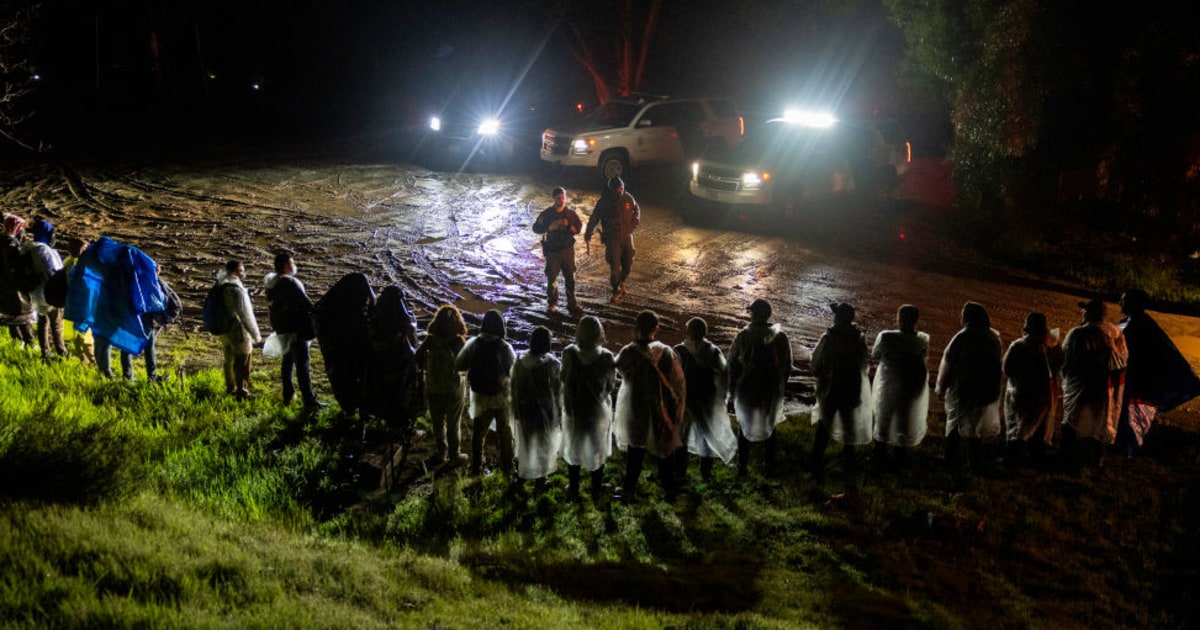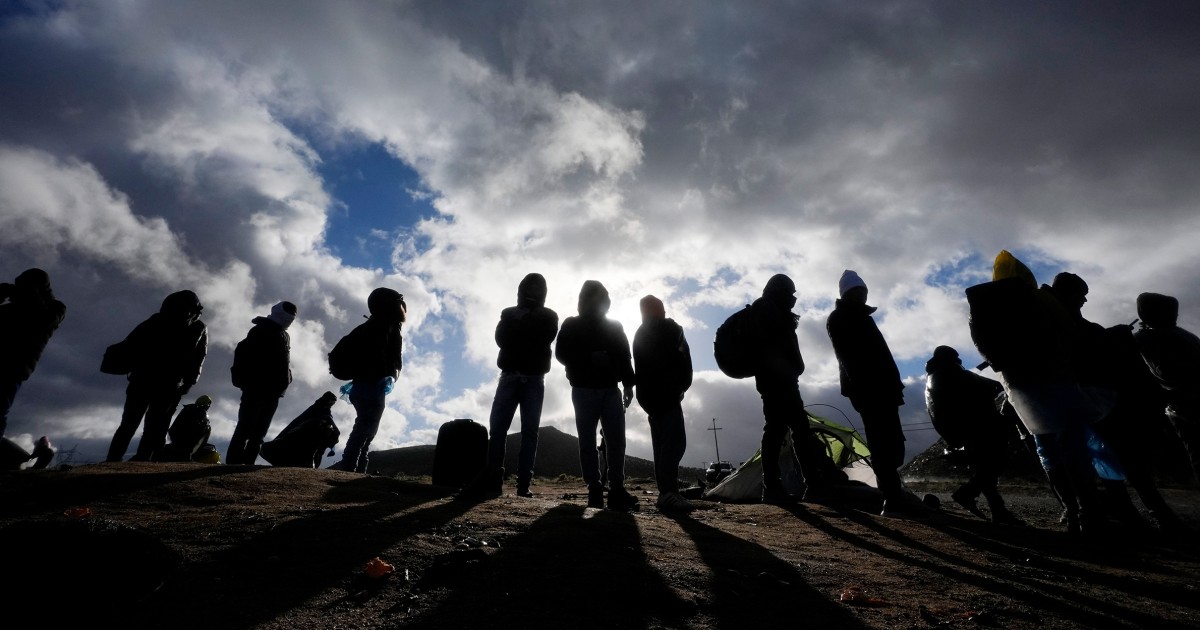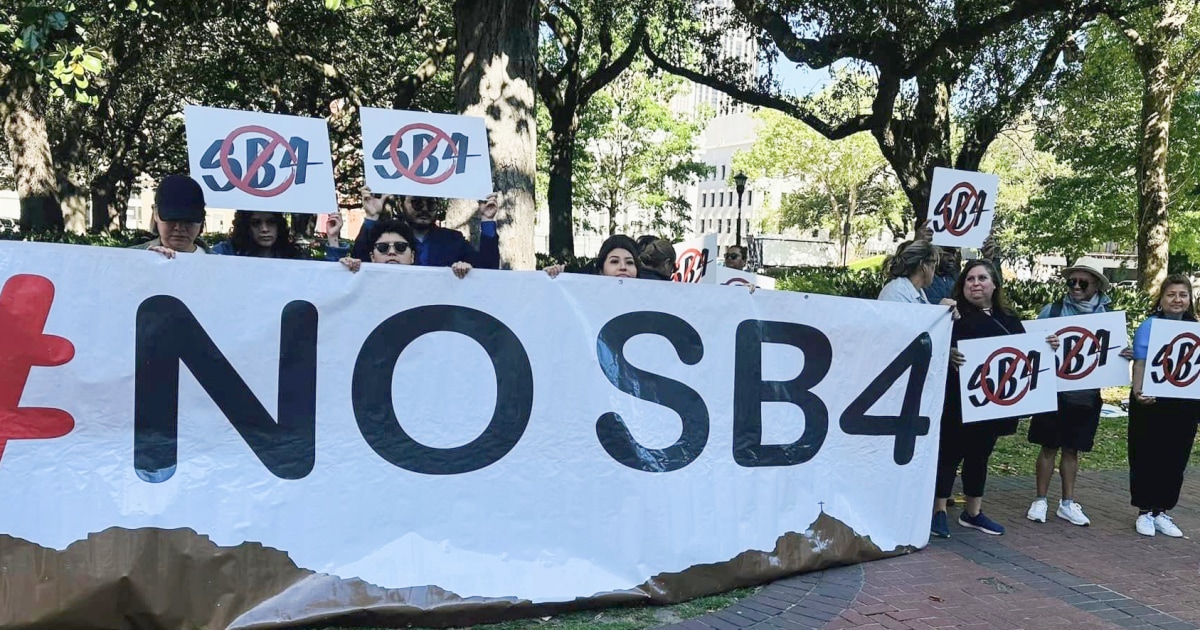Americans double the probability of being incarcerated compared to undocumented immigrants 2:45
(CNN Spanish) --
The United States is the country in the world with the largest number of immigrants: it is estimated that more than 45 million people who were born in another country currently live there.
While 23% of these people are in an irregular situation —between 10 and 11 million people—, the remaining 77% have some type of legal status: either because they became naturalized citizens, because they obtained permanent residence or because they obtained temporary residence, according to the Pew Research Center.
The living conditions in the US of these people are deeply marked by this legal status, especially after the federal welfare and immigration laws of 1996, which inaugurated an era of restrictions for immigrants.
In this context, many states have worked to fill certain federal shortcomings, with inclusive policies so that people with an irregular immigration status can access public programs, benefits and services.
"By adopting policies that create pathways to prosperity, in areas like college tuition, driver's licenses and access to health care, states can dismantle systemic barriers to people without documented immigration status and provide them with more opportunities to contribute to their states, communities, and economies," states a recent report from the Center on Budget and Policy Priorities.
Who are the Hispanics who vote in the midterm elections?
Thus, living in the same country, everyday issues enabled by these policies can outline very different realities depending on the state where each person lives.
advertising
CNN knows details of the US plan. for Venezuelan immigrants 2:35
Tanya Broder of the National Immigration Law Center told CNN that "more than a third of states will adopt at least one immigrant-inclusive law or policy by 2022. State and local governments increasingly recognize the need to ensure that All residents have access to healthcare, financial support, and job security.”
So where do immigrants choose (or not) to live in the US?
Almost half (45%) are spread over just three states: California (24%), Texas (11%) and Florida (10%).
California had the largest immigrant population of any state in 2018, at 10.6 million.
That same year, Texas, Florida and New York had more than 4 million immigrants each.
Behind New York is the state of New Jersey.
Is the choice of the state of residence related to the possibilities offered by each state legislation?
driver's licenses
Several states allow people who do not have legal residence in the United States to obtain driver's licenses.
The requirement is to present certain documentation such as a foreign birth certificate, a foreign passport or consular card and evidence of current residence in the state.
Those states, according to data from the National Immigration Law Center, are California, Colorado, Connecticut, Delaware, Washington City, Hawaii, Illinois, Maryland, Massachusetts, New Jersey, Nevada, New Jersey, New Mexico, New York, Oregon. , Puerto Rico, Rhode Island, Utah, Vermont, Virginia, and Washington.
On the other hand, Texas and Florida, two of the states with the largest number of immigrants, do not offer that possibility.
A group of immigrants walk from the Immigrant Resource Center to a shopping mall in search of food, on Sept. 19, 2022 in San Antonio, Texas. (Photo by Jordan Vonderhaar/Getty Images)
Among the states in which driving permits are granted beyond immigration status, there are different types of licenses.
Some states only offer a restricted license, such as Hawaii, others offer licenses that are only valid for one year, such as Utah, and some states have broader regimes and allow the license to also be used as a form of of identification—such as California.
Many of those states implemented their laws after the passage of the REAL ID Act of 2005, which established national standards for driver licenses and identification cards issued by each state to provide access to internal flights and certain federal facilities.
In practice, this allowed states to issue licenses and IDs that are not acceptable for federal identification purposes but serve other purposes, many of which serve irregular immigrants.
Indeed, this possibility has benefited both unauthorized immigrants and the states, because, where it has been implemented, it has increased public safety for the entire community.
According to an article by the
think tank
Center for American Progress, this measure allows for safer roads and more insured drivers.
In addition, the police can keep their records up to date and use their time efficiently, while people who do not have legal status are more willing to collaborate with the authorities, losing the fear of being deported at a traffic control, for example.
Paola Albarran, from Venezuela, meets with her cousin, Anali Fernandez, a Houston resident, outside the Immigrant Resource Center in San Antonio, Texas. (Photo by Jordan Vonderhaar/Getty Images)
Having a form of identification also makes it easier to access public and financial services, such as the ability to open a bank account and to access a public library and the city's recreational areas.
Additionally, registrations for new driver's licenses increase state and local revenue.
In New York, for example, undocumented drivers' license and car registrations are estimated to have generated an additional $57 million in annual revenue.
Access to higher education
A 1982 US Supreme Court decision ruled that states are required to provide all students with a public K-12 (kindergarten, elementary, and secondary) education, regardless of immigration status.
The Supreme Court decision, however, does not apply to higher education.
However, from 2001 until now, several states have taken measures to facilitate access to university for students with an irregular immigration status.
One such law is related to tuition equity, which ensures that anyone can pay in-state tuition to attend public institutions.
According to a report by The Next 100 organization, in states where these laws do not exist, undocumented students are forced to pay international tuition fees to pursue higher education.
On average, these rates are more than $8,000 more expensive.
The fairness of tuition becomes more critical in a context of questioning DACA, a program that protects from deportation and grants other benefits to young people who arrived in the country illegally before their 16th birthday.
In all, twenty-one states plus the city of Washington have tuition equity policies.
California and New Mexico have the most equitable and creative policies to expand access to higher education for undocumented people.
For their part, there are three states—Arizona, Georgia and Indiana—with laws that specifically prohibit undocumented students from enjoying state tuition rates.
Alabama and South Carolina go even further, prohibiting undocumented students from enrolling in any public community college.
James Camp of Annunciation House helps Alexandra Tovar, who recently arrived from Venezuela after crossing the border into Mexico in El Paso, Texas, on September 22.
Annunciation House and other immigrant shelters overflowed due to the arrival of immigrants (Photo by Joe Raedle/Getty Images)
Another aspect linked to educational access has to do with financial aid from the states, which is crucial for the population with irregular immigration status.
In the US, these students are not eligible for federal financial aid, such as scholarships and loans.
With differences in terms of requirements, accessibility and amounts, 13 states and the City of Washington implemented policies of this type and allocated resources to support them.
Finally, another important educational issue has to do with access to professional licenses and certifications.
They are required for the exercise of activities such as an electrician, teacher or doctor, and are tested and issued at the state level, so it is in the power of the states to open that possibility for those who do not enjoy citizenship, for example.
In no case will this qualify those people to receive a federal work permit: companies and organizations are prohibited from hiring undocumented people.
However, having a professional license or certification allows for formal recognition of a person's skills, as well as enabling them to start small businesses and provide their skills to their communities.
Lastly, it is an important step on the road to citizenship.
It is a measure recently enabled by just 8 states — California, Illinois, Nevada, New Jersey, New Mexico, South Dakota, Utah and Wyoming — but it is gaining more and more strength due to the multiple benefits it entails.
Access to health services
Immigrants face several obstacles when it comes to obtaining health care, and this situation has worsened with the covid-19 pandemic: while health and financial needs have increased, health coverage for immigrant families has been reduced.
According to a report published in July 2021 by the Kaiser Family Foundation, 23% of immigrants lawfully present in the US and 46% of undocumented immigrants do not have health insurance, compared to more than 9% of US citizens without coverage.
From 2010 onwards, the country dramatically reduced the number of people without health insurance thanks to the Affordable Care Act (ACA).
However, the legislation did not treat citizens and non-citizens in the same way.
Despite the difficulties, the states have in their power the possibility of improving access to health for children, pregnant women and offering mental health services.
Immigrants from Cuba and Venezuela at the US-Mexico border as they await processing by the Border Patrol, on May 22, 2022, in Yuma, Arizona.
(Photo by Mario Tama/Getty Images)
In the case of coverage for minors, six states and the city of Washington passed laws that expand state health insurance programs, in order to guarantee that all children, regardless of their immigration status, have access to coverage state-subsidized healthcare.
These policies vary depending on the income levels of the families: while some only provide coverage for people with very low incomes, others give a subsidy on coverage.
Services typically include regular check-ups and immunizations, asthma checkups, dentistry, ophthalmology, and emergency services.
Although services related to childbirth and previous labor are included in Medicaid for all women who are eligible regardless of their immigration status, there are 16 states plus the city of Washington that have expanded their services.
Through the "unborn child" option of the Federal Children's Health Insurance Program (CHIP), states use federal funding to expand access to prenatal care.
The state of California is the only one that, for the moment, has included mental health services in its medical coverage, which also benefits undocumented immigrants.
sanctuary cities
"Sanctuary city" is a broad term for territorial jurisdictions that have policies designed to limit cooperation or participation in federal immigration enforcement actions.
Most of those policies consist of not cooperating with federal law enforcement on immigration policies.
Sometimes, these measures prevent agencies from complying with the detention orders of the Immigration and Customs Enforcement Service (ICE), block the possibility of interviewing the undocumented or prevent cross-information about these people between agencies. of different levels.
The states that are considered sanctuary cities—largely because of the policies explained above—are California, Colorado, Connecticut, Illinois, Massachusetts, New Jersey, New Mexico, New York, Oregon, Vermont, Washington.
“State and local governments have taken important steps to improve the lives of community members regardless of their immigration status, but much more remains to be done.
To protect the health and safety of all residents, states must continue to improve access to health care, nutrition, financial support, education, and professional licensing;
protect the rights of workers and tenants;
invest in access to lawyers for immigrants;
strengthen driver and consumer privacy;
and limit federal enforcement of immigration laws on local issues,” Broder added.
Alejandra Ramos and Tal Kopan contributed to this report
US ElectionsMidterm ElectionsImmigrantsLatino Vote








